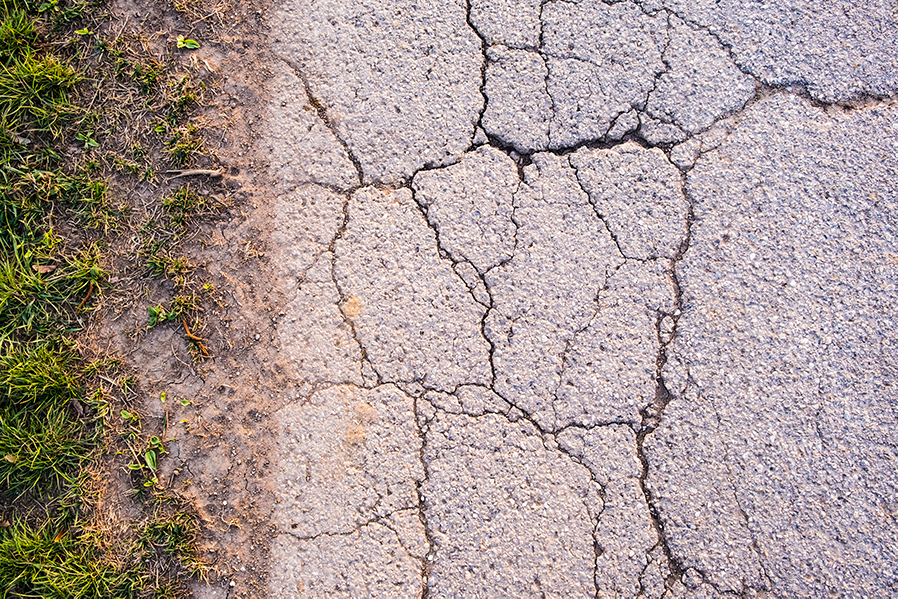Asphalt cracking can create a huge annoyance for business owners and consumers alike. Not only are they unattractive, but they can cause deterioration of the pavement and a tripping hazard for pedestrians. When left untouched, cracks can even cause significant damage to the lower layers of the asphalt, requiring extensive repair.
To understand the various types of cracks in your pavement and the necessary repairs, it is essential to understand what causes asphalt to crack. We are discussing five common causes today to help you avoid it from happening as much as possible.
1. Cold Temperatures
Throughout the winter months, the ongoing cycle of freezing and thawing can cause your asphalt to crack. Naturally, there will be some movement within the asphalt as it expands and contracts throughout the winter. However, when the thaw portion of the cycle comes, it allows rainwater and melted snow to find its way into the pavement. Then, when the freeze part comes around, the water in the cracks will expand as it freezes and allow the crack to grow.
The more cycles your area sees, the worse the cracks will become. If you are concerned about cold temperatures causing damage to your asphalt, schedule an inspection with your trusted sealcoating or asphalt contractor.
2. Moisture
As we just learned above, moisture can cause asphalt cracking throughout the winter months as it freezes and thaws. Moisture is the largest cause of cracking within asphalt, and not just during the winter. As water seeps into the pavement, it instantly causes a breakdown in materials as it washes away the sand and gravel base.
Other water that finds its way to your asphalt via small cracks can only make them worse. For example, heavy rains can push a lot of water through a small crack and cause it to wear away. Regular sealcoating can help your surface stay intact and help prevent moisture from finding its way through your asphalt.
3. Sunshine
Another element to watch out for that can cause cracking to your asphalt is the sun. The more sunshine your asphalt soaks up, the more dry it will become and cause it to be brittle. As traffic drives on top of the brittle asphalt, cracks will form and get worse with the continual traffic. If you live in an area that sees a lot of sunshine throughout the year or extreme heat, work with an asphalt contractor. They will be able to provide you with the best products that will hold up with the extreme sunshine.
4. Traffic
Over time, as traffic drives over your asphalt or if you leave heavy vehicles parked for an extended period, your asphalt will start to get fatigued. Discovering your parking lot’s traffic patterns can give you some insight into the necessary maintenance it needs to prevent this type of cracking. Regularly scheduled sealcoating is one way to help prevent fatigue along with moving heavy vehicles or machinery.
5. Age
Of course, the older something gets, the more likely it is to break down and need repair. Your asphalt is no exception, even with routine maintenance and utilizing high quality products. Over time, weather, traffic, chemical leakage, and other elements cause your asphalt to break down. This can compound and take a toll on the pavement that cannot be easily repaired. As cracking continuously develops, you might take it as an opportunity to have a new parking lot installed.
Work With A Charlotte Based Sealcoating Professional
If you are located in the greater Charlotte area and have questions about your asphalt, contact Toste Construction today! We will provide you with a FREE estimate on all repairs, crack filling, and sealcoating. Our team is highly skilled to get the job done right the first time!
Toste Construction specializes in sealcoating and crack filling to ensure you and your customers have a smooth surface to drive on. We are your Mooresville asphalt and pavement maintenance company. Our services include asphalt sealcoating, striping, patching, pothole repair and crack filling for both residential and commercial projects throughout western North Carolina.

